Chinese 'living bubble' could shelter astronauts on Mars
A Chinese architecture firm has revealed designs for a tiny shelter that could one day house astronauts on Mars.
Called the MARS Case, the designs show a minimalist structure that takes after the shape of a light bulb, with a square base and a 'living bubble' that's inflatable.
While purely conceptual renderings, the designs could serve as a helpful foundation should humans ever colonize the red planet.
WHAT IS THE MARS CASE?
It's a compact, self-sustaining living space, measuring just 7.8ft long, 7.8ft wide and 6.5ft tall.
A 'living bubble' attached to the base can be inflated, collapsed, and folded into itself 'like the packing and unpacking of a suitcase.'
Inside, there is a main living area, what appears to be a bathroom, a desk, some chairs and a storage area.
Smartphones, such as those made by Xiaomi, can be used to control appliances and other functions, like lighting, in the house.
There's even windows attached to the bubble-like structure that would pop out upon inflation.
The MARS Case was created by Beijing-based design firm Open Architecture in partnership with Chinese technology giant Xiaomi.
It's a compact, self-sustaining living space, measuring just 7.8ft long, 7.8ft wide and 6.5ft tall.
Open Architecture said it took inspiration from Henry David Thoreau's famous novel Walden when designing the structure.
In Walden, Thoreau moves to a cabin in the Massachusetts woods and chronicles his time stripped of traditional comforts, instead choosing to live simply and removed from society.
'Two hundred years ago, Henry David Thoreau withdrew from society and moved to Walden alone to reflect upon the nature of simple living,' Open Architecture explained.
'Today, as we live and get lost in a world of consumption and environmental crises, what are our essential needs?

The MARS Case was created by design firm Open Architecture in partnership with Chinese technology giant Xiaomi. The structure is designed to be portable and transferable
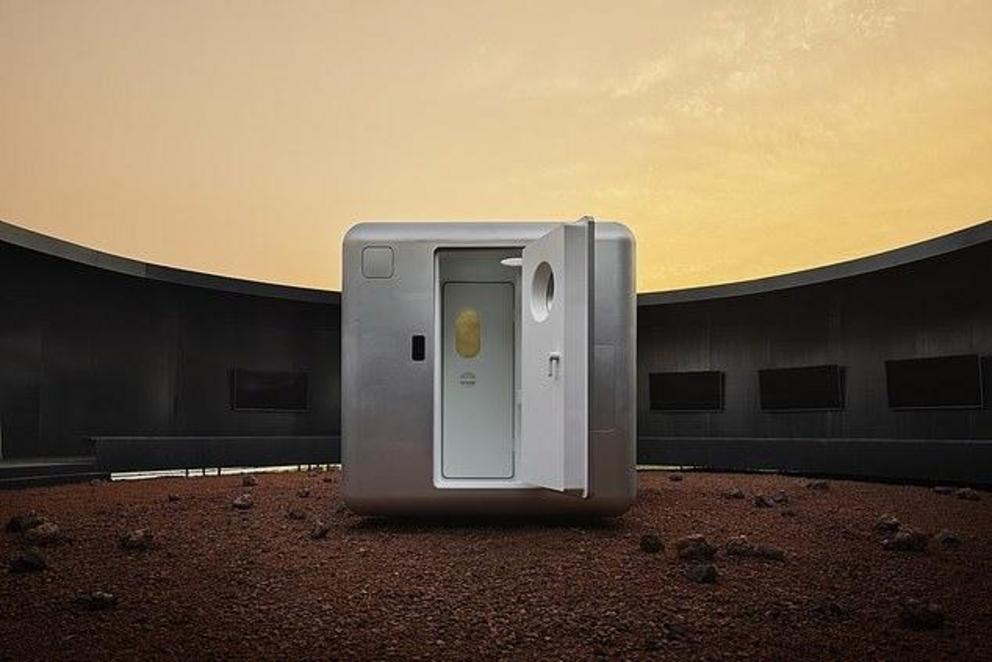
It's a compact, self-sustaining living space, measuring just 7.8ft long, 7.8ft wide and 6.5ft tall. A square base connected to the 'living bubble' serves as a door to enter and exit the structure
'MARS Case presents a vision of this ideal house, seamlessly combining technology, product design, and architecture,' the firm added.
The structure is designed to be portable and transferable.
A 'living bubble' attached to the base can be inflated, collapsed, and folded into itself 'like the packing and unpacking of a suitcase.'
Inside, there is a main living area, what appears to be a bathroom, a desk, some chairs and a storage area.
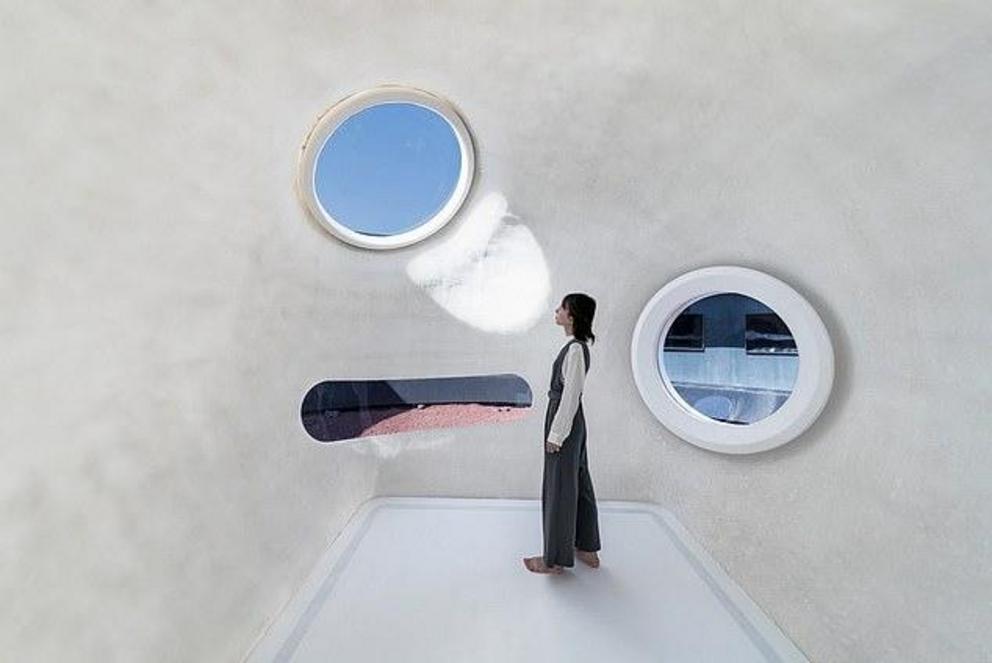
A 'living bubble' attached to the base can be inflated, collapsed, and folded into itself 'like the packing and unpacking of a suitcase.' There are even windows that pop out upon inflation
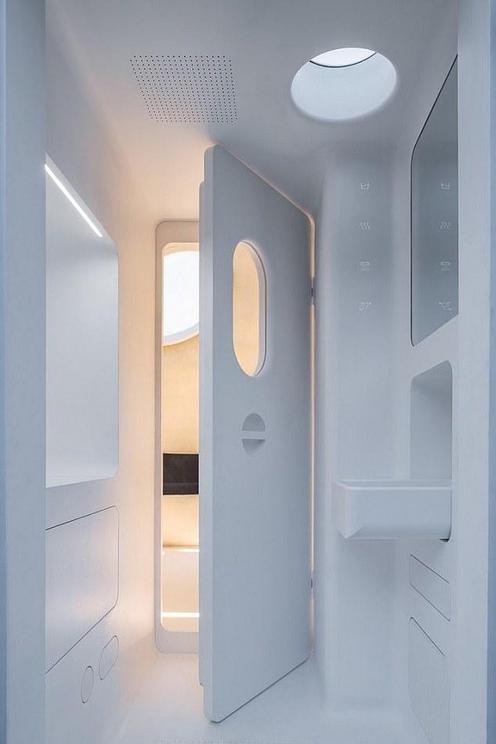
Inside, there is a main living area, what appears to be a bathroom, a desk, some chairs and a storage area. Open Architecture says it's a 'seamless' blend of technology and design
Smartphones, such as those made by Xiaomi, can be used to control appliances and other functions, like lighting, in the house.
There's even windows attached to the bubble-like structure that would pop out upon inflation.
Open Architecture wanted to make sure the structure doesn't impose on its surrounding environment, so they took great care in integrating it into the ecosystem.
'Imagine that humanity is forced to settle on Mars, our distant, lonely planetary neighbor,' Open Architecture explained.
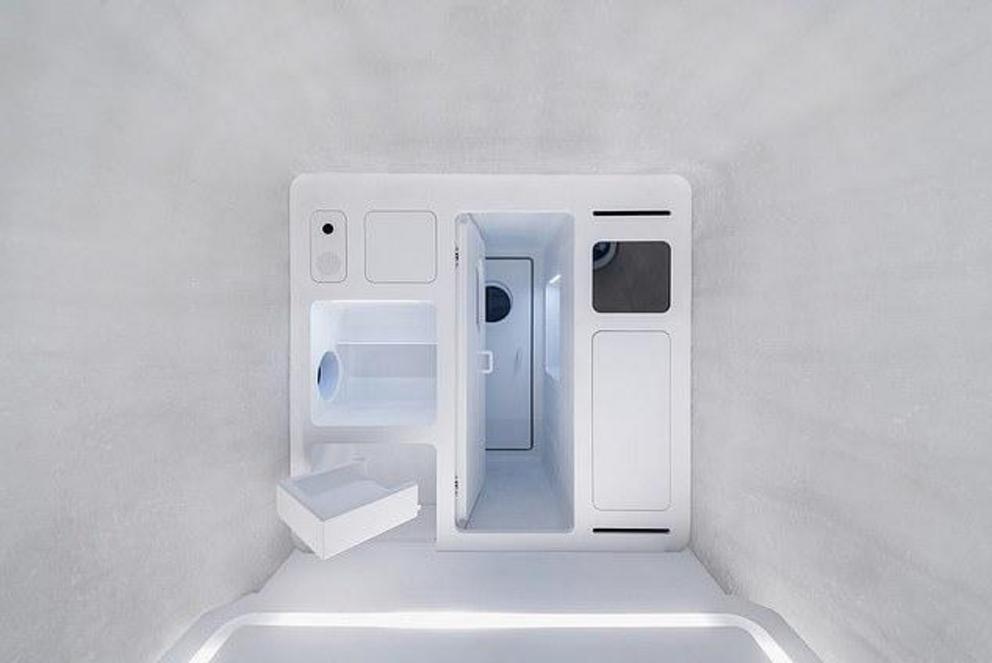
Smartphones, such as those made by Xiaomi, can be used to control appliances and other functions, like lighting, in the house. Pictured is a rendering of a living area in the structure
WHAT ARE NASA'S PLANS FOR A MANNED MISSION TO MARS IN THE 2030s?
Mars has become the next giant leap for mankind's exploration of space.
But before humans get to the red planet, astronauts will take a series of small steps by returning to the moon for a year-long mission.
Details of a the mission in lunar orbit have been unveiled as part of a timeline of events leading to missions to Mars in the 2030s.
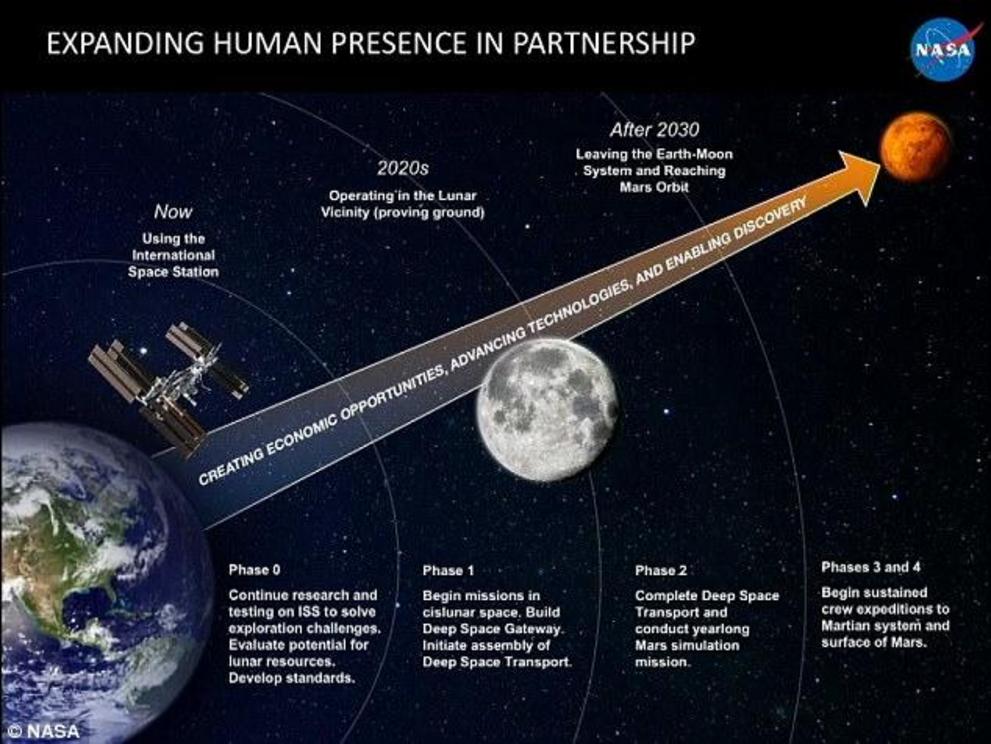
Nasa has outlined its four stage plan (pictured) which it hopes will one day allow humans to visit Mars at he Humans to Mars Summit held in Washington DC yesterday. This will entail multiple missions to the moon over coming decades
In May 2017, Greg Williams, deputy associate administrator for policy and plans at Nasa, outlined the space agency's four stage plan that it hopes will one day allow humans to visit Mars, as well as its expected time-frame.
Phase one and two will involve multiple trips to lunar space, to allow for construction of a habitat which will provide a staging area for the journey.
The last piece of delivered hardware would be the actual Deep Space Transport vehicle that would later be used to carry a crew to Mars.
And a year-long simulation of life on Mars will be conducted in 2027.
Phase three and and four will begin after 2030 and will involve sustained crew expeditions to the Martian system and surface of Mars.
'There, we cannot rely on natural resources, as we have become so accustomed to on Earth.
'There, we have no choice but to reduce the excessive consumption of our former lifestyles and carry only minimal essentials. Recycling will be the only way we survive.
'In letting go of the 'extra', we will come to rethink our lives in a simplified setting,' the firm added.
Open Architecture says the MARS Case is capable of harnessing and recycling heat, exhaust, condensation and 'feeding it back into this integrated ecosystem.'

Open Architecture claims that in MARS Case, energy, water, and air will be fully recycled in the system, minimizing consumption of resources. Recycling will be a main component
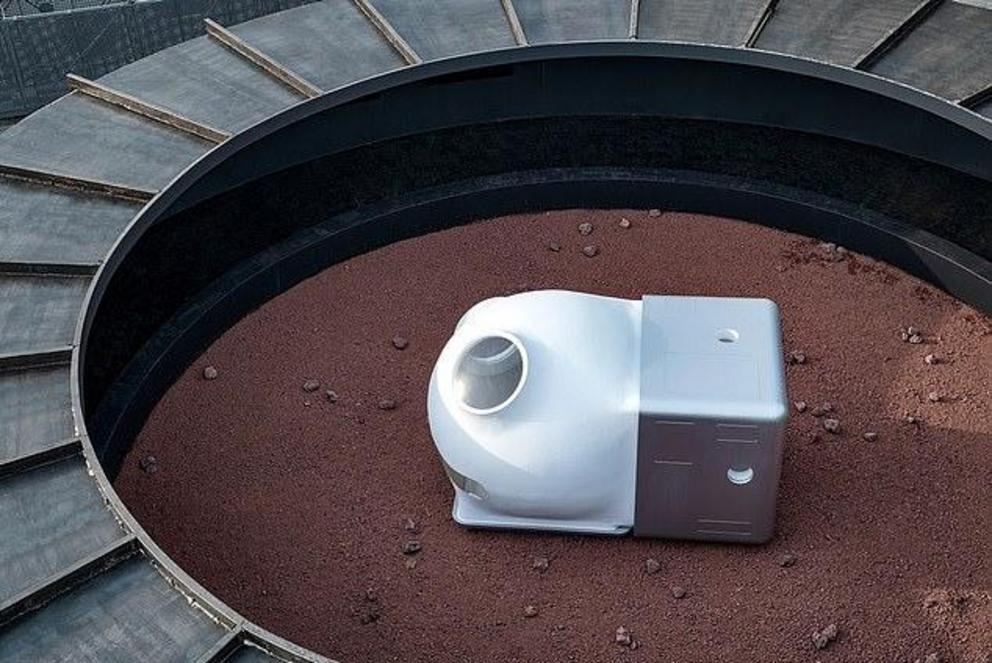
Open Architecture says the MARS Case is capable of harnessing and recycling heat, exhaust, condensation and 'feeding it back into this integrated ecosystem.' They say it's also zero waste
'In another words, energy, water, and air will be fully recycled in the system, minimizing consumption of resources,' the firm said.
They say it will be entirely zero waste.
It comes as many scientists and experts have created their own designs for what human civilization could look like on Mars.
Additionally, a recent NASA competition called for teams to submit 3D-printed habitats that they believe could be used to colonize the red planet in the coming decades.
(video can be accessed at source link below)
Video can be accessed at source link below.

